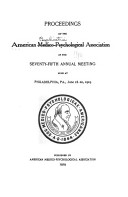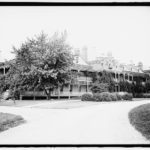Dr. William A. White was an undisputed leader in the field of psychiatry (see last post). He was St. Elizabeths’ superintendent for over twenty years, and implemented many innovations. St. Elizabeths endured its own cycles of overcrowding, scandals, and investigations, but it was generally considered one of the leading institutions of its kind. It attracted some of the country’s best psychiatrists and researchers, who wanted to be affiliated with the asylum and its good reputation.
Dr. Harry Hummer worked at St. Elizabeths before he became superintendent of the Canton Asylum for Insane Indians. He supervised a department with over 600 patients and exerted plenty of power. However, he undoubtedly felt that he would rather be in complete control at a smaller facility than a more minor figure in one as large as St. Elizabeths. And, despite his many failures, Hummer was well qualified to take on the Canton Asylum.
He graduated from Georgetown University in 1899 and interned at Columbia Hospital (for about three months) and then at St. Elizabeths. He worked nine years at the latter as both a junior and then a senior assistant physician.
Hummer took an active interest in his field. In 1908, when he left St. Elizabeths for Canton, Hummer was a member of the District Medical Society (the Medical Association of the District of Columbia) and an associate member of the American Medico-Psychological Association. Once in Canton, he was able to become an active, rather than an associate member of the latter organization.
He was elected vice-president of the Seventh District Medical Society of South Dakota in 1915 and later became a member of the county Insanity Commission. Hummer was listed in Who’s Who in America from 1928-1936, and was a member of the South Dakota State Medical Association. Hummer’s qualifications for his position were as good or better than anyone else’s who might have wanted the position . . . his failing was in implementing what he so obviously knew.








